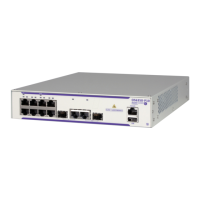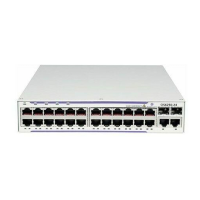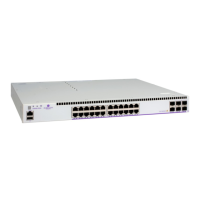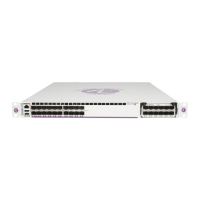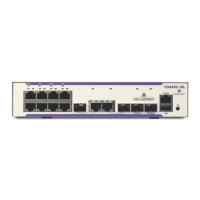Configuring VLAN Stacking VLAN Stacking Overview
OmniSwitch AOS Release 8 Network Configuration Guide December 2017 page 35-3
VLAN Stacking Overview
VLAN Stacking provides a mechanism for defining a transparent bridging configuration through a service
provider network. The major components of VLAN Stacking that provide this type of functionality are
described as follows:
• Provider Edge (PE) Bridge—An ethernet switch that resides on the edge of the service provider
network. The PE Bridge interconnects customer network space with service provider network space. A
switch is considered a PE bridge if it transports packets between a customer-facing port and a network
port or between two customer-facing ports.
• Transit Bridge—An ethernet switch that resides inside the service provider network and provides a
connection between multiple provider networks. It employs the same SVLAN on two or more network
ports. This SVLAN does not terminate on the switch itself; traffic ingressing on a network port is
switched to other network ports. It is also possible for the same switch to function as a both a PE
Bridge and a Transit Bridge.
• Tunnel (SVLAN)—A tunnel, also referred to as an SVLAN, is a logical entity that connects customer
networks by transparently bridging customer traffic through a service provider network. The tunnel is
defined by an SVLAN tag that is appended to all customer traffic. This implementation provides an
SVLAN that is defined by the type of traffic that it carries - an SVLAN that carries customer traffic.
• Network Network Interface (NNI)—An NNI is a port that resides on either a PE Bridge or a Transit
Bridge and connects to a service provider network. Traffic ingressing on a network port is considered
SVLAN traffic and is switched to a customer-facing port or to another network port.
• User Network Interface (UNI)—A UNI is a port that resides on a PE bridge that connects to a
customer network and carries customer traffic. The UNI may consist of a single port or an aggregate of
ports and can accept tagged or untagged traffic.
The following illustration shows how VLAN Stacking uses the above components to tunnel customer
traffic through a service provider network:

